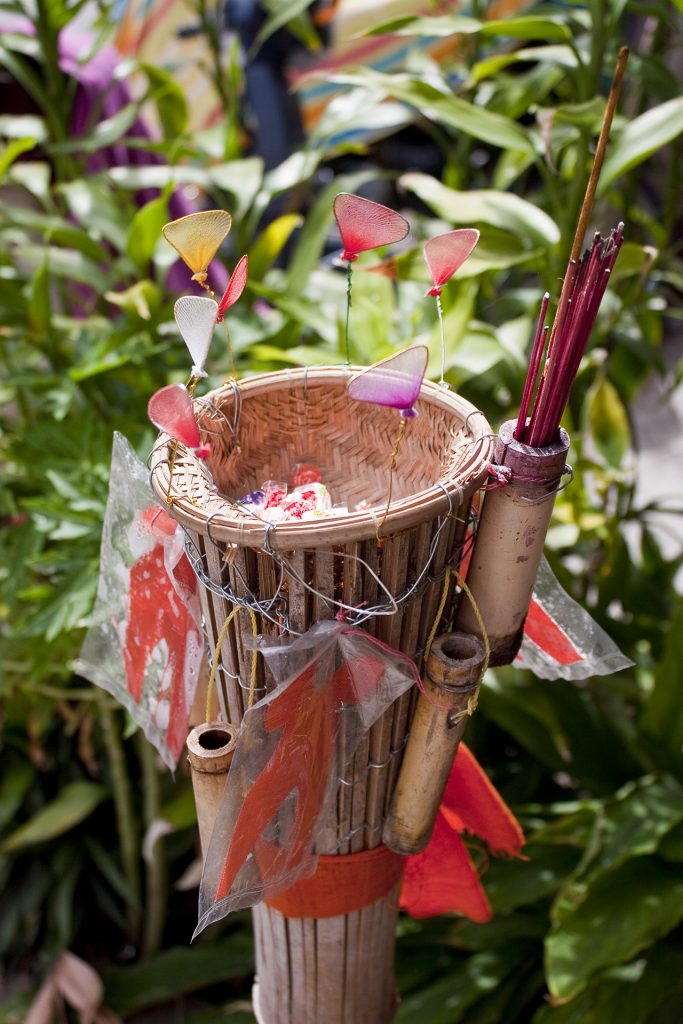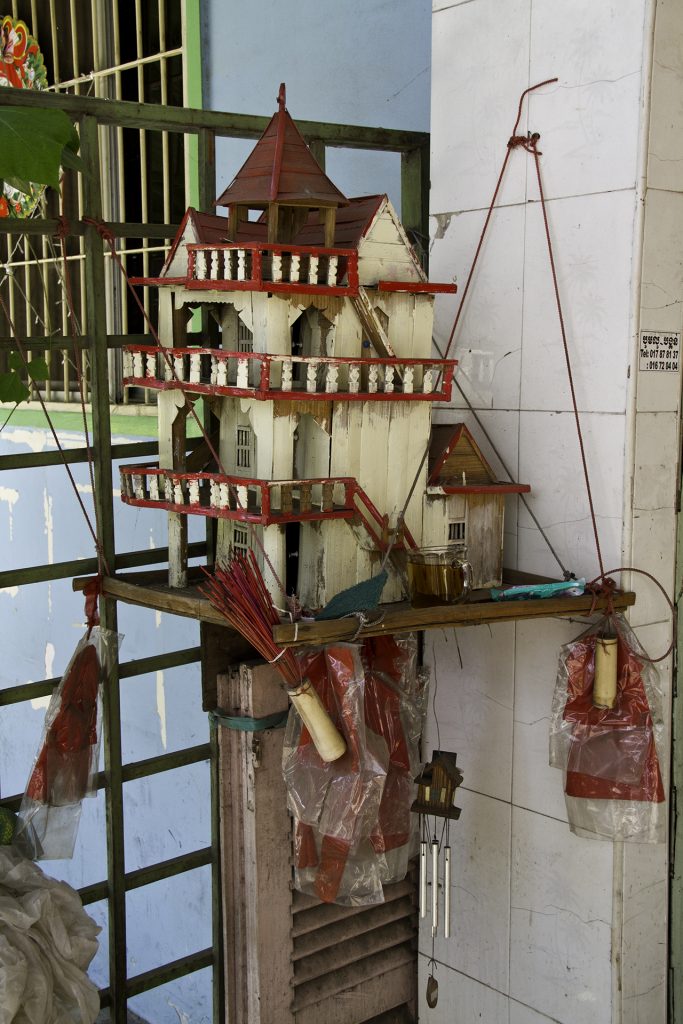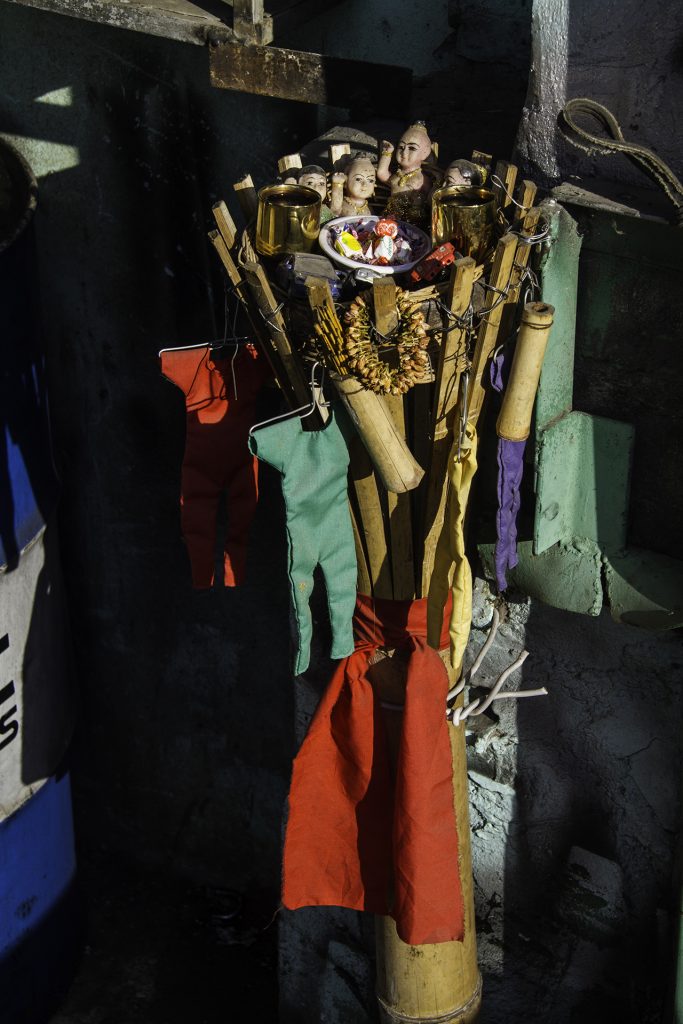Whether on city streets or deep in the Cardamom Mountains, in a poor village or inside a gated Phnom Penh villa, you’ll invariably come across small makeshift houses hanging from prominent locations in businesses and homes. They are so universally present where Khmer people are, that they collectively fade into obscurity, mirroring its relative decline in recently documented Khmer history. Chasing the Elves of the Khmer delves into this Cambodian tradition; it’s a photo essay that captures the creativity that goes into these omnipresent “spirit houses” and celebrates the popular practice of erecting shrines dedicated to the Mrenh Gongveal (ម្រេញគង្វាល), or Elves of the Khmer.
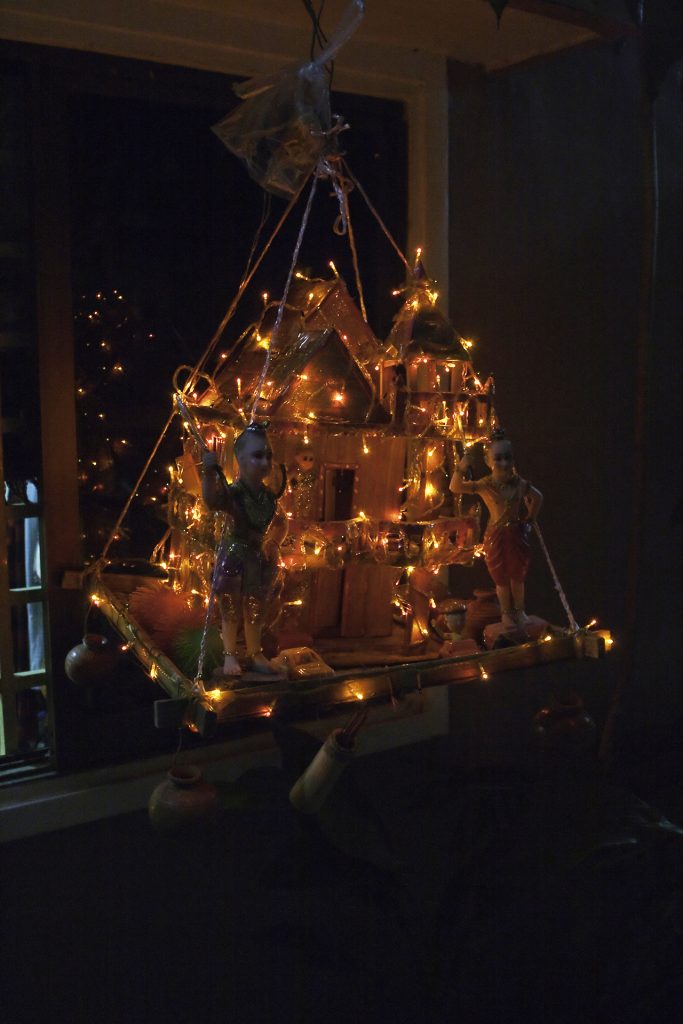
Ask any Khmer about spirit houses and a common explanation is that they “bring luck.” Dig deeper than that, and you soon find that the origin story is elusive. The Khmer word Mrenh is explained by some to mean literally “tiny” while others might refer to the slang for “one who catches fish.” Gongveal means “keeper” or “herdsman” or “guardian”.
The spirit house range from a simple container to elaborately designed mini-mansions, reflecting the residents’ economic means. They contain toys and figures for the spirits, and offerings are regularly placed in them, such as small cups of water or food.
Researching it doesn’t clarify things. There’s no single accepted system of transliterating the Khmer script to the Roman alphabet, which complicates historical documentation and retrieval. For example, in addition to “Mrenh Gongveal”, variations include M’ring Kung Veal, Merang Kengveal, and Mrén Kongvial, etc. On Wikipedia it is spelled Mrenh Kongveal.
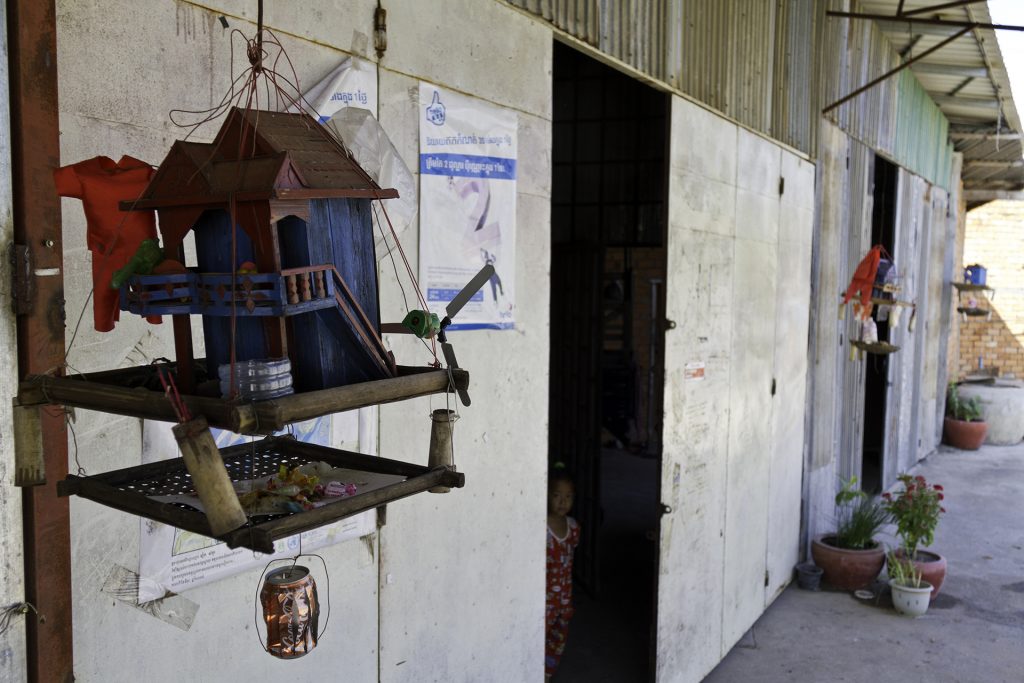
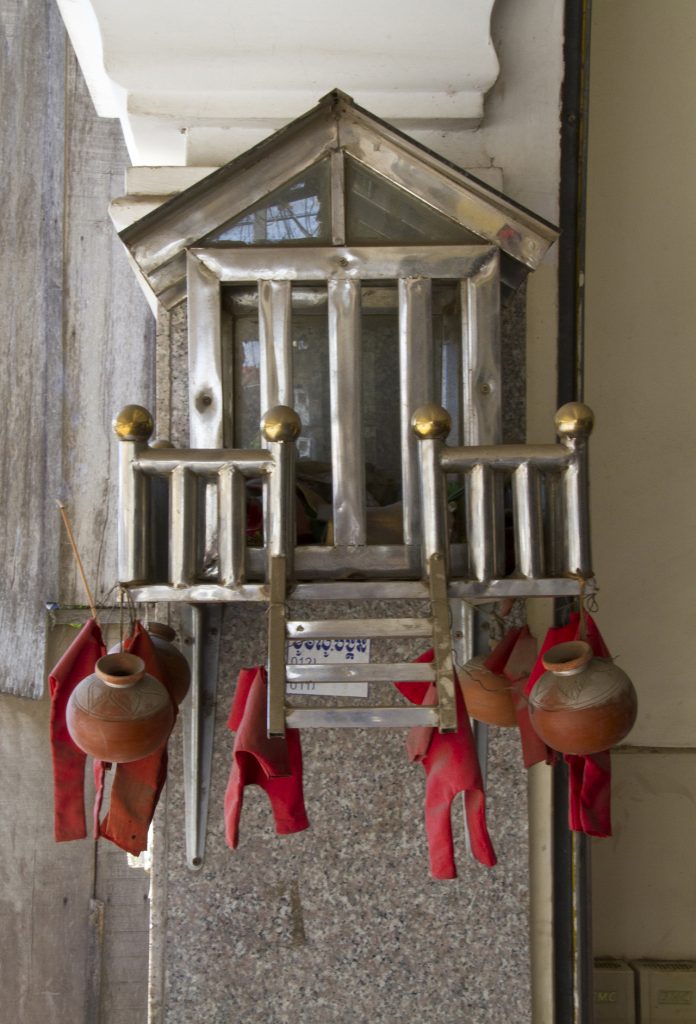
From the book:
“Mrenh Gongveal seem to be similar to the elves of western folklore. The author found they were originally perceived to be nomadic beings in the jungle, where they were the guardian herdsmen of wild animals, especially social animals that travel in herds, such as elephants. Hunters, farmers and mahouts (elephant trappers), would make baskets to leave offerings for Mrenh Gongveal, to bring luck in the hunt, to help them capture young elephants and buffalo, or to ward wild animals away from their crops. Today Mrenh Gongveal are thought of as akin to supernatural guardians, associated with a person, place, or institution. They protect or offer guidance to their benefactors, usually through telepathy (heard as whispers) or influencing dreams. They can’t be seen by adults but belief holds that they can make themselves appear to children between the ages of 6 and 14 who are “pure of heart”, and many Cambodians claim to have seen Mrenh Gongveal as children. By anecdotal accounts the roots of Mrenh Gongveal appear to be uniquely Khmer. Mrenh Gongveal are small in stature with bodies comparable in size to human children, and are fond of mischief. Offerings are often left to them when seeking their help.”
So for those similarly fascinated by this particular Khmer mythology, this book is an artistic endeavor, a journey of photos, anecdotal accounts and archived historical info. Read about it in Goodreads, or get it on Amazon. It was listed as a “2018 Summer Reads” selection in BookWorks Destination/Vacation category.
